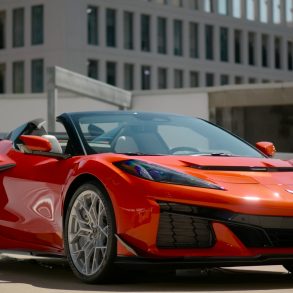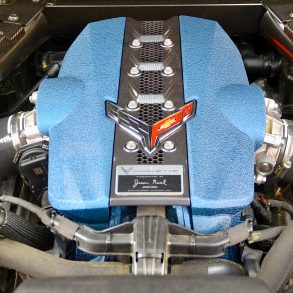The fourth-generation Corvette ushered in an era of brave modern design that challenged 15 years of Mako-inspired shapes. While still a beautiful and nearly timeless design, 542,862 C3s had rolled out of St. Louis and Bowling Green; it was time for a change and for Chevrolet to move the design language into the future. GM needed something fresh, modern, and technologically advanced. More importantly, they needed to tap into the house designers and engineers who could tackle the monumental challenge of reimagining the modern Corvette.
How revolutionary could the key figures make the next generation of America’s Sports Car without losing its unmistakable ‘Vette DNA? Enter Chief Engineer Dave McLellan and Lead Designer Jerry Palmer—two men whose combined influence reshaped not just the Corvette, but the direction of GM performance design for decades to come.
A New Era Begins: The Challenge After Duntov
Following Zora Arkus-Duntov—the godfather of Corvette performance—was a task few would want, and even fewer could handle. Yet this was the responsibility placed squarely on the shoulders of Dave McLellan in 1975.
He stepped into leadership at a time when the domestic performance industry was being suffocated by federal emissions regulations. The Corvette had been stripped of its potency, and the C3, while still a sales success, was aging rapidly. Performance output had dropped to its lowest point since the mid-1950s. McLellan saw what was coming: enthusiasm might carry the Corvette only so far, but without a bold, modern successor, the brand risked losing relevance.
McLellan didn’t just accept this reality—he chose to rebuild the Corvette from the chassis up.
Destined for Cars: McLellan’s Path to the Driver’s Seat
McLellan’s early automotive years read almost like fate. Born in Munising, Michigan, and raised in booming Detroit, he grew up immersed in the sights and sounds of American car culture. Engineering called to him early, leading him to Wayne State and eventually to General Motors in 1959, where he began at the Milford Proving Grounds studying vehicle dynamics, noise, and vibration.
He quickly evolved through the ranks—managing GM’s Black Lake Vehicle Dynamics Test Area, contributing to Chevrolet engineering programs, and even helping shape the 1970½ Camaro before pursuing a management degree at MIT.
When he returned to GM in 1974, he was placed under Duntov’s guidance. One year later, the torch passed: the Corvette now belonged to McLellan.
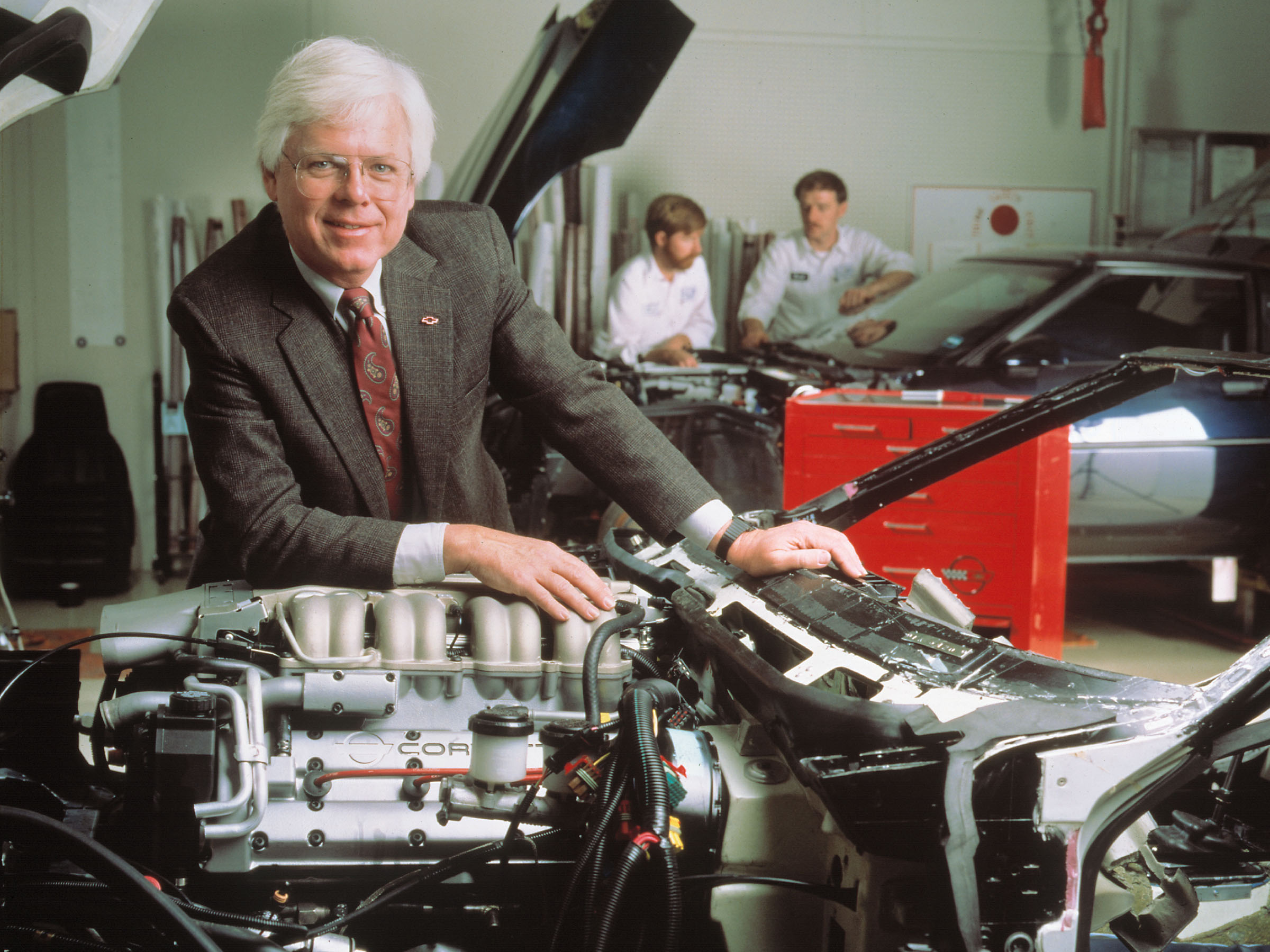
The Corvette Gets Its Designer: Enter Jerry Palmer
On the other side of GM, another rising talent was carving his own path. Jerry Palmer joined GM Design immediately after graduating from Detroit’s Center for Creative Studies in 1966. From day one, he was steeped in advanced design concepts and cutting-edge work, producing sketches, models, and future product studies that helped shape GM’s direction.
His early fingerprints were already on Corvette design: the Four Rotor-Aerovette concept, one of the most advanced and striking showcars in GM history. It previewed what a mid-engine Corvette could be—gull-wing doors, aerodynamic lines, and a futuristic silhouette. Though the concept itself never reached production, its design language would live on in Palmer’s later work.
By 1974, Palmer had become Chief Designer for the Chevrolet III Studio, and his next major assignment would become the defining project of his career.
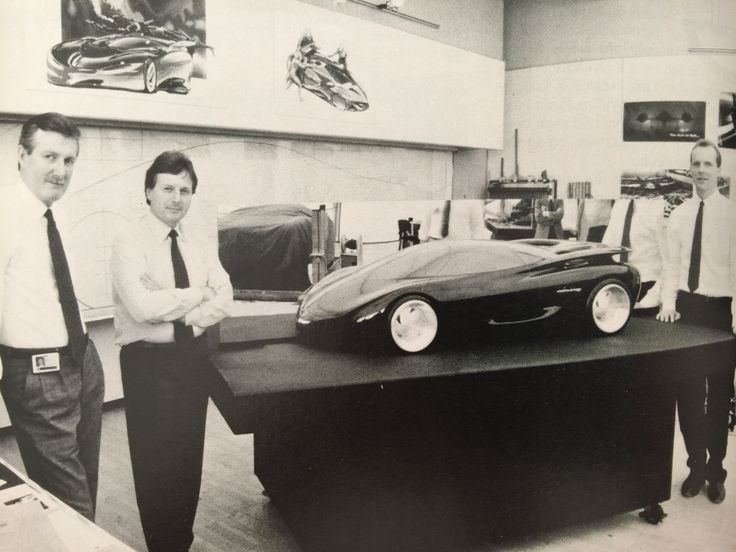
Two Paths Converge: The Birth of the C4 Program
Development of the fourth-generation Corvette officially began in 1979, with McLellan already laying the groundwork for a clean-sheet redesign. His engineering team explored everything—including a potential mid-engine layout, a direction previously championed by Duntov and embodied in Palmer’s Aerovette concept.
That same fall, Jerry Palmer joined the program. Working from early CAD chassis drawings developed by Brian Decker—some of the first of their kind—Palmer began sculpting the new Corvette in two dimensions. He was inspired by the Aerovette’s sleekness but made a defining choice: instead of the long sweeping tail of the concept car, he introduced a modern Kammback rear section that would become a signature element of the C4’s profile.
Together, Palmer and McLellan became the two halves of a single mission: design and build a Corvette that projected the future without abandoning its identity.
Bold Lines, Advanced Tools: Designing the C4
As Palmer refined his sketches, GM Design began converting them into three-dimensional quarter-scale models. Every contour was wind-tunnel tested—over 100 tests in total—to achieve the ideal aerodynamic profile. The result: a drag coefficient of 0.33, astonishing for the era, and a clear statement of GM’s ambitions.
From those models, a full-scale clay model emerged. Sharp edges, glassy surfaces, a forward-raked B-pillar, and a taut, modern stance combined into a form that stunned everyone who saw it. McLellan and Palmer both questioned whether GM’s top brass would approve something so radical.
They needn’t have worried.
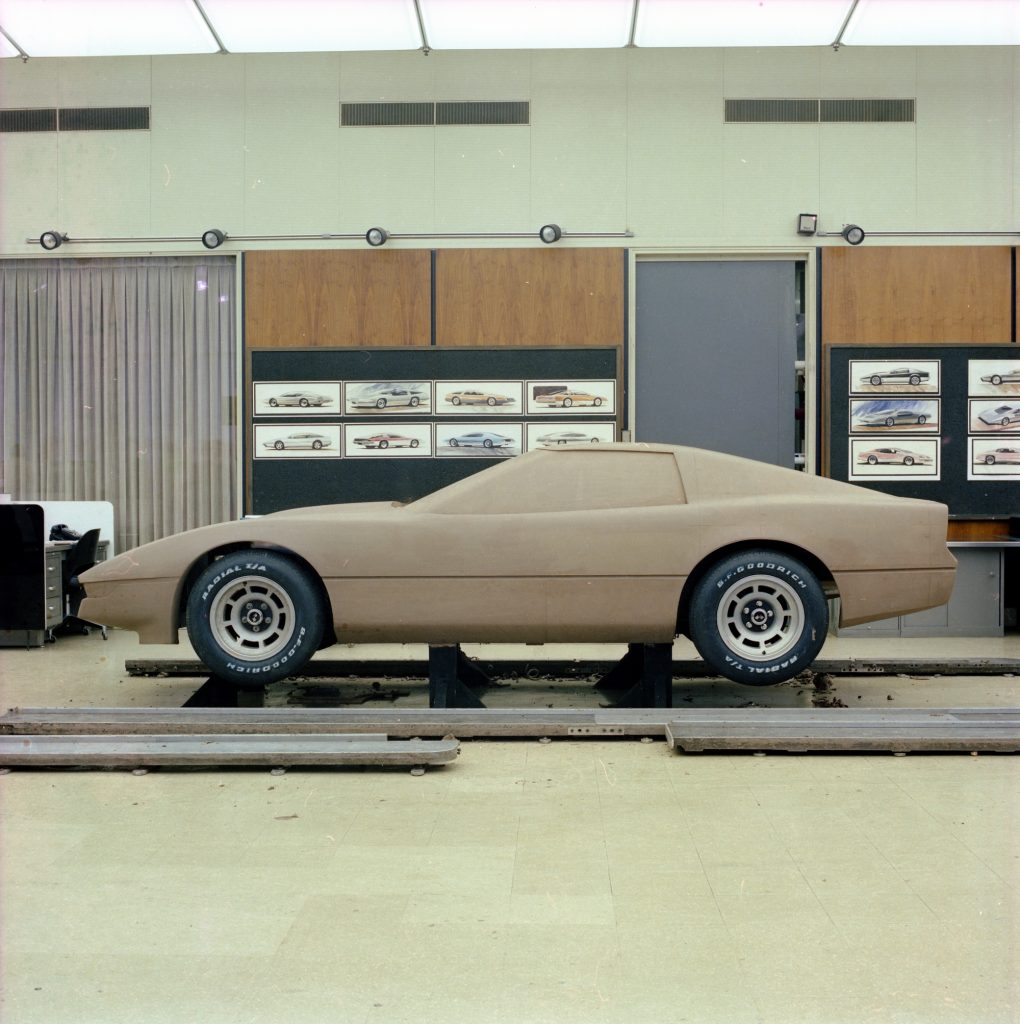
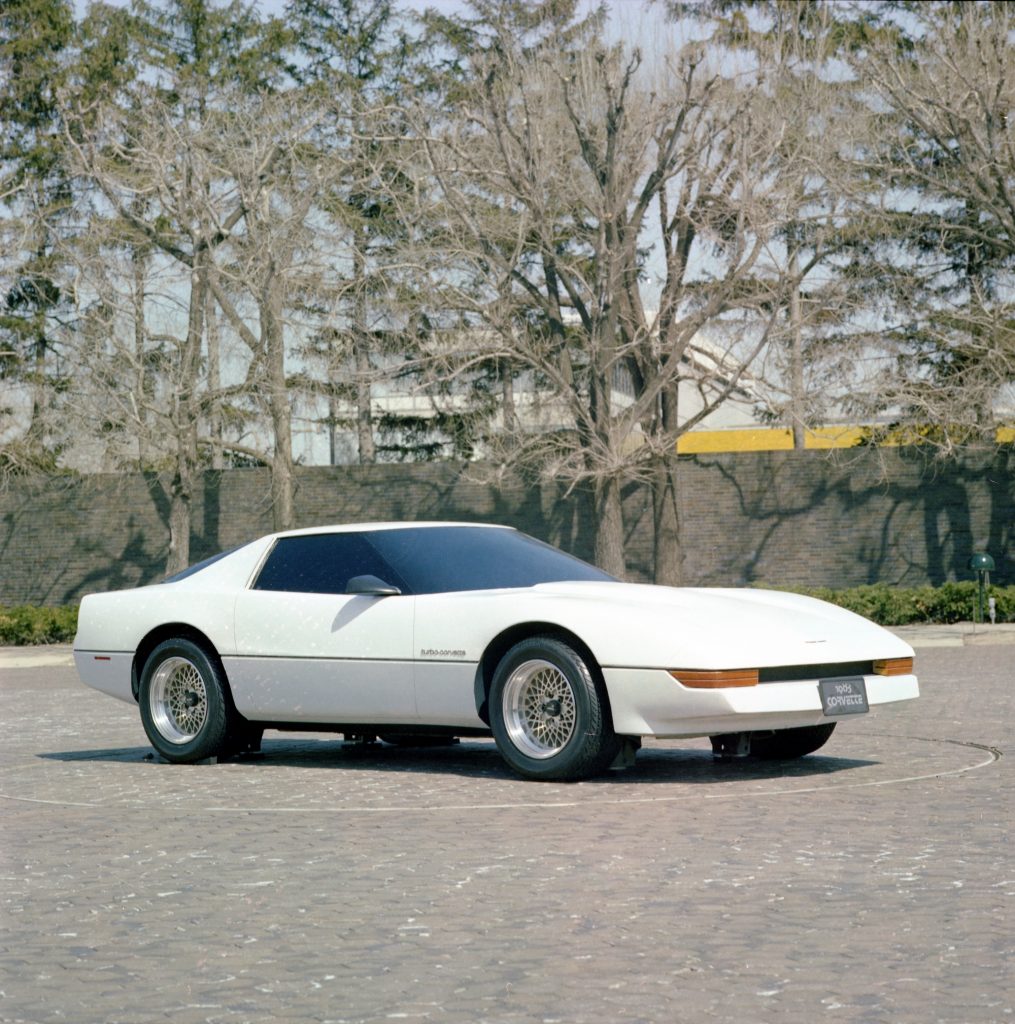
Greenlight Morning: The PPG Approval
On April 22, 1980, GM’s powerful Product Policy Group arrived at Palmer’s studio to evaluate the pre-prototype Corvettes. The reaction was immediate—unanimous approval.
With that, the program moved into the next phase: transforming the concept into a production-ready machine. Engineering and design worked shoulder-to-shoulder. McLellan’s group tackled the mechanical and structural elements; Palmer’s team iterated the exterior and interior aesthetics. Early mules, fashioned initially from cardboard and wood, eventually evolved into metal and fiberglass test cars.
Budget cuts reduced the number of planned test mules, but the engineering value of the prototypes remained enormous. Countless problems were discovered and resolved long before production ever began. This was the value of McLellan and Palmer’s partnership: engineering rigor paired with design clarity, both aimed at delivering a world-class sports car.
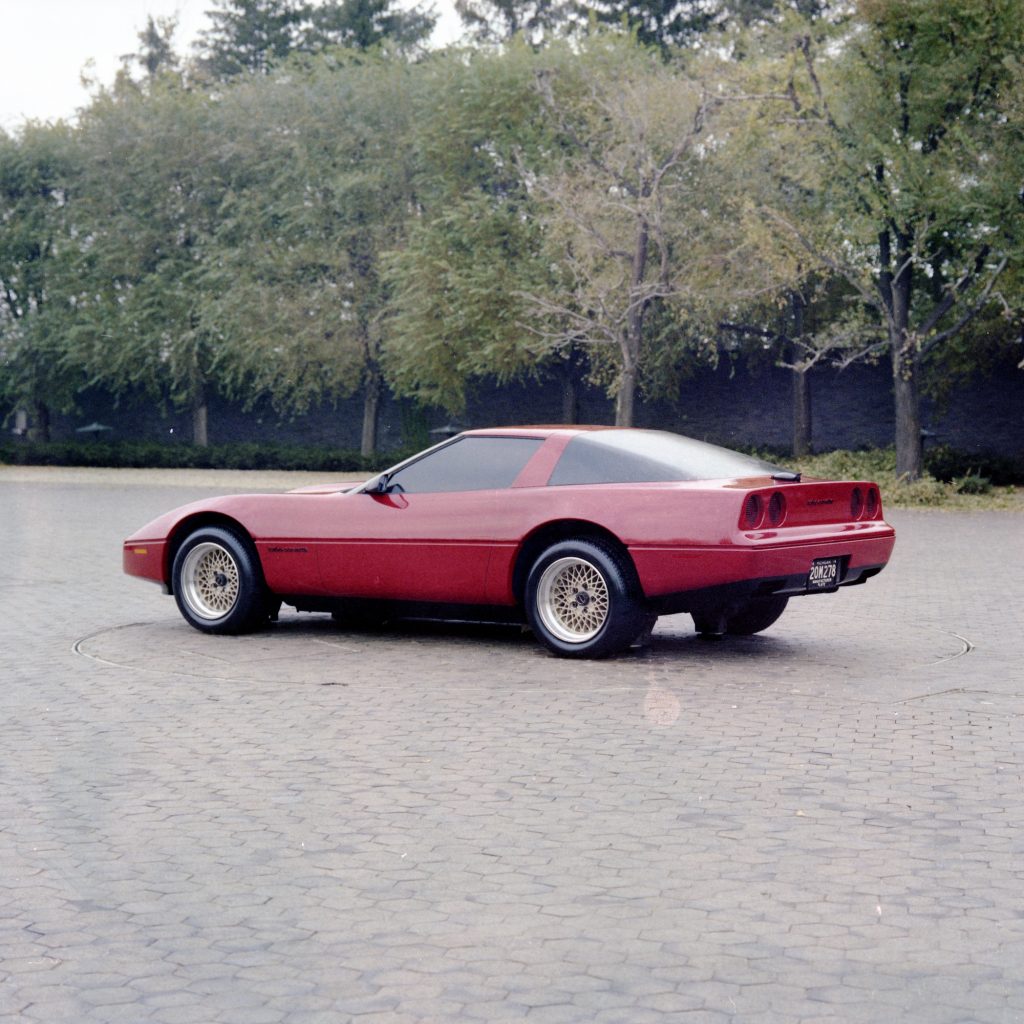
The Year With No Corvette
The press reveal was scheduled for fall 1982 at Riverside International Raceway. Yet even as excitement grew, one major question lingered: would the new Corvette launch as a 1983 model or be delayed?
Federal emissions regulations dictated the answer. With testing still underway, the team needed more time to refine exhaust and emissions systems. The solution: skip a model year. Although production paused, development didn’t. Fourteen test mules and forty-three pilot cars were built with 1983 VINs. They were driven hard, used for media demos, and served as evaluation cars to gather consumer reactions. All but one were destroyed once 1984 production began. The last survivor—VIN 1G1AY0783D5110023—now lives at the National Corvette Museum, revered as the “One and Only.”
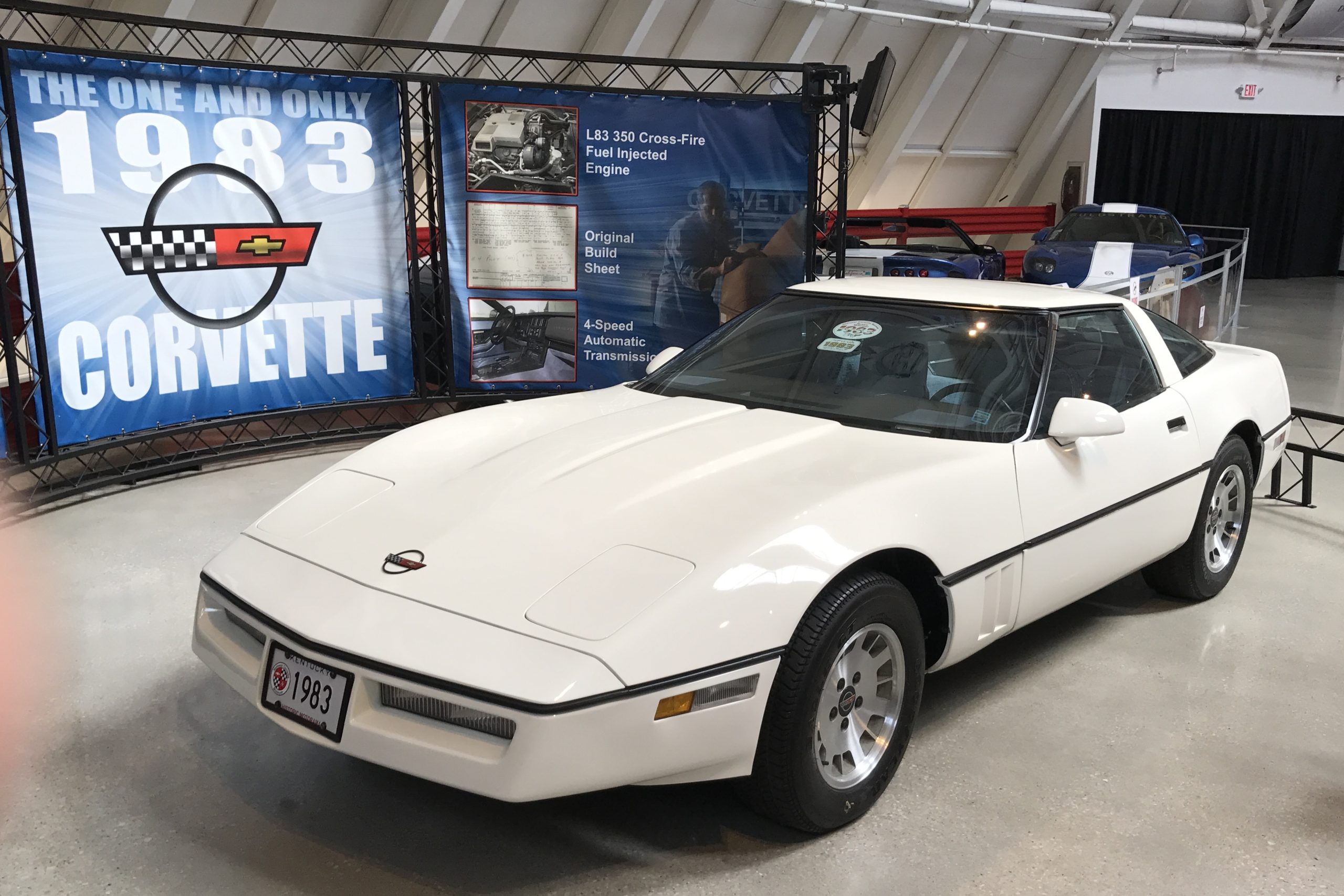
The 1984 Corvette Arrives
When the 1984 Corvette finally hit the public, critics and enthusiasts immediately recognized how revolutionary it was. Car and Driver declared it a “true-born world-class sports car.” Motor Trend named it “Car of the Year.” Its performance, sophistication, and design made it clear that Corvette had officially entered the modern era.
Palmer’s sharp, aerodynamic shape and McLellan’s advanced chassis engineering formed one cohesive identity. Even ride-quality criticisms in the launch year were quickly addressed by McLellan’s team with suspension refinements for 1985.
Corvette had not just survived the regulatory era—it had returned as a technological leader.
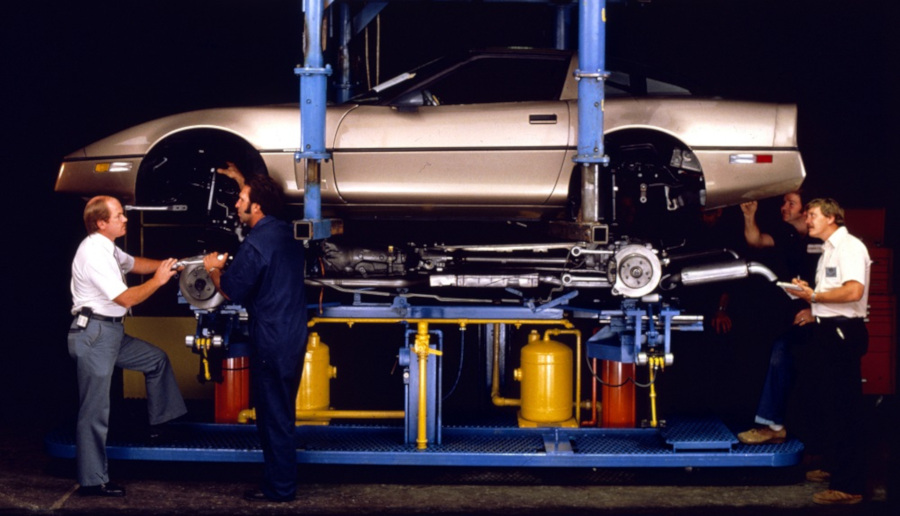
Technology and Triumph: McLellan’s Legacy
During McLellan’s tenure, the Corvette enjoyed a renaissance of innovation:
- ABS brakes for the first time on a GM vehicle
- Traction control
- Airbags
- Passive keyless entry
- And eventually the crown jewel of the C4 era: the LT5-powered ZR-1
The ZR-1, “King of the Hill,” delivered 380 horsepower, global headlines, and a world endurance record in 1990, capturing the attention of enthusiasts everywhere. McLellan also pushed Corvette back into competitive motorsports, leading to total dominance in SCCA Escort Showroom Stock from 1985–1987—so dominant that the car was banned to maintain competitive balance.
By the time McLellan retired in 1992, the Corvette had been transformed from a struggling icon into a cutting-edge performance car that reestablished America’s Sports Car as a world contender.
Palmer’s Rise and Recognition
Meanwhile, Palmer’s star continued to rise within GM Design. His mastery of form, proportion, and aerodynamics led him to the role of Executive Director of Design for GM North America, overseeing interior and exterior design for all GM production vehicles.
His contributions extended well beyond the C4:
- 1978 Camaro Z28 facelift
- 1978 Corvette facelift
- 1987 Chevrolet Beretta
- Advanced aerodynamics studies
- Concept leadership, including the Four Rotor-Aerovette
In 2000, his impact was formally recognized as he was inducted into the National Corvette Museum Hall of Fame. Palmer retired in 2002, leaving behind a design legacy that touched not just Corvette but the entire GM portfolio.
The Partnership That Redefined the Corvette
The C4 Corvette didn’t emerge from a single mind—its success came from the interplay of engineering vision and design leadership. McLellan pushed Corvette out of its performance slump; Palmer pushed its design into the future.
They worked not as isolated leaders but as collaborators whose combined strengths formed the backbone of America’s Sports Car for an entire era. Their work created more than a new generation of Corvette. It created the template for the modern Corvette: advanced, technical, aerodynamic, uncompromising.
The C4 was the turning point. And the men behind it—Dave McLellan and Jerry Palmer—are the architects of the modern Corvette identity we still celebrate today.
Thanks for being with us today on this Corvette journey. We invite you to join the CorvSport movement!
- Engage with CorvSport’s 167,000 Facebook followers and be the first to see our daily content.
- Experience how obsessed we are and view our top 25 monthly features by visiting our digital magazine, CORVETTE OBSESSED.
- Enjoy an ad-free experience, get exclusive content, and support CorvSport for only $2.92/month!
*Additional Source Curated For This Feature: Motorcities.org




